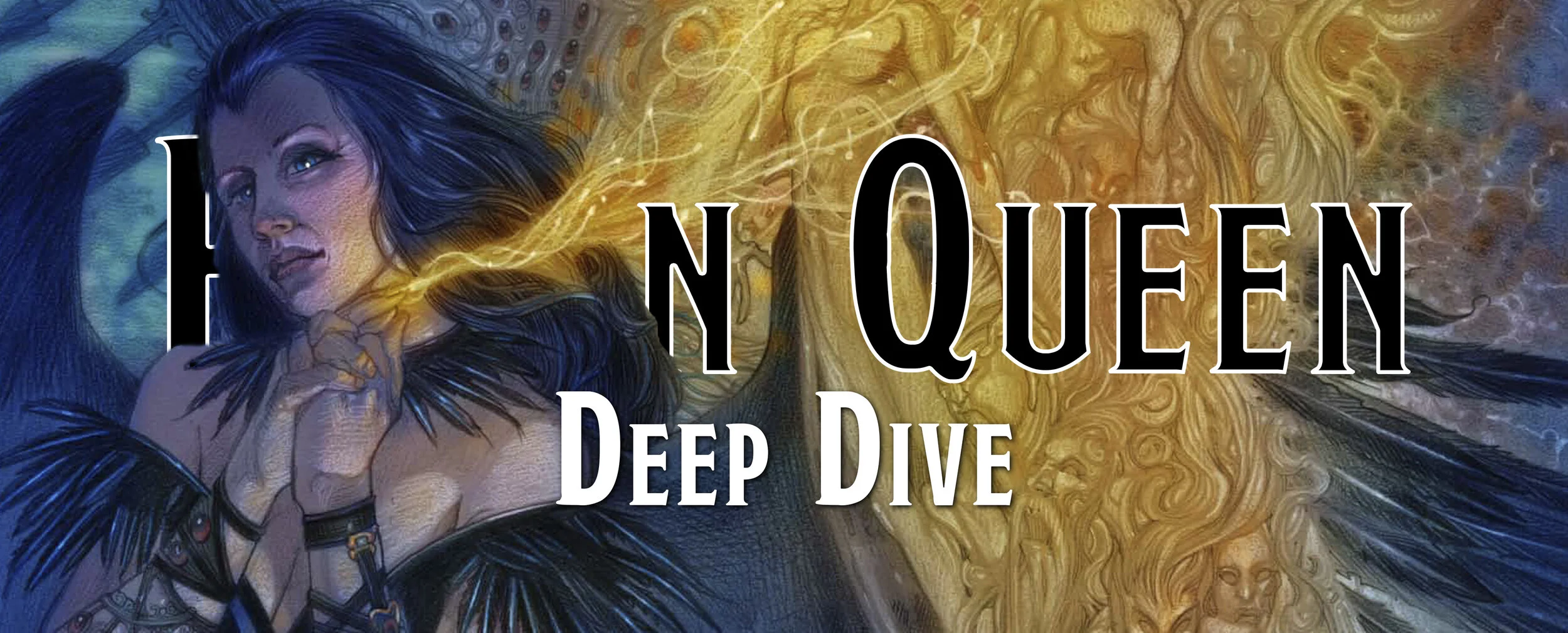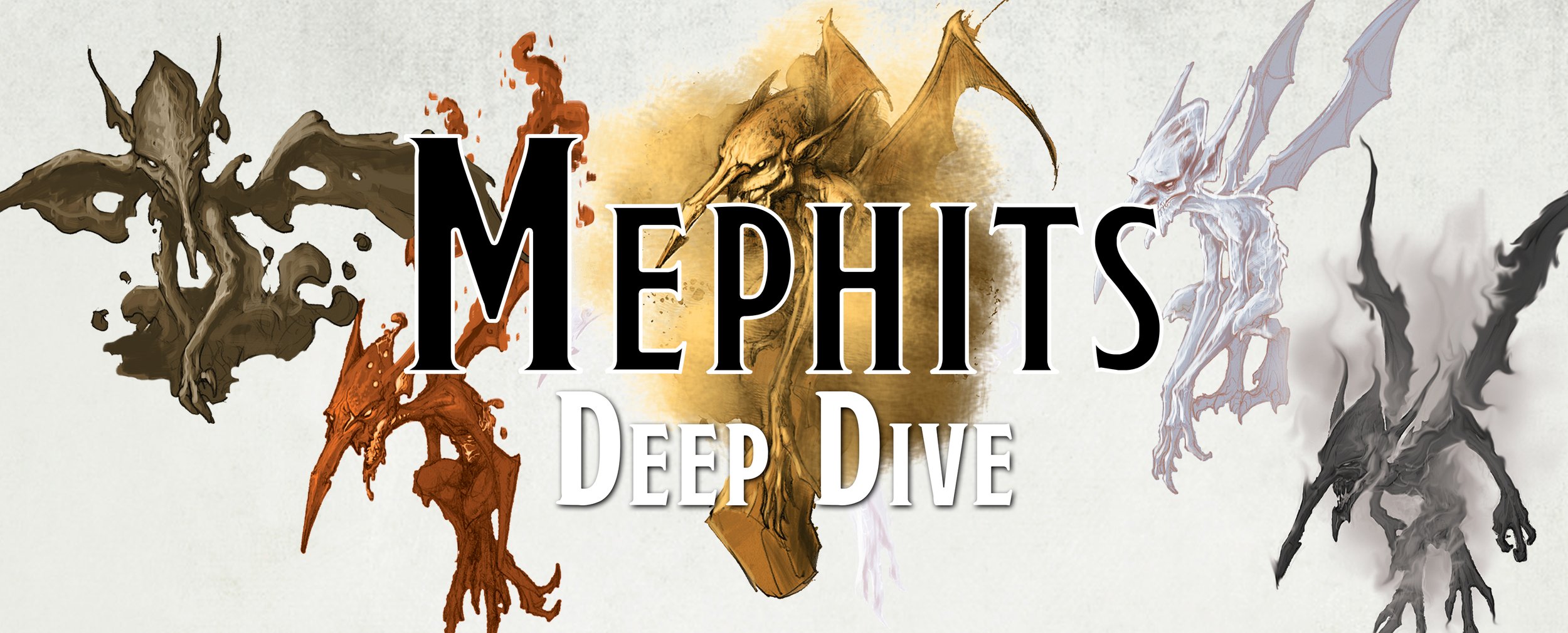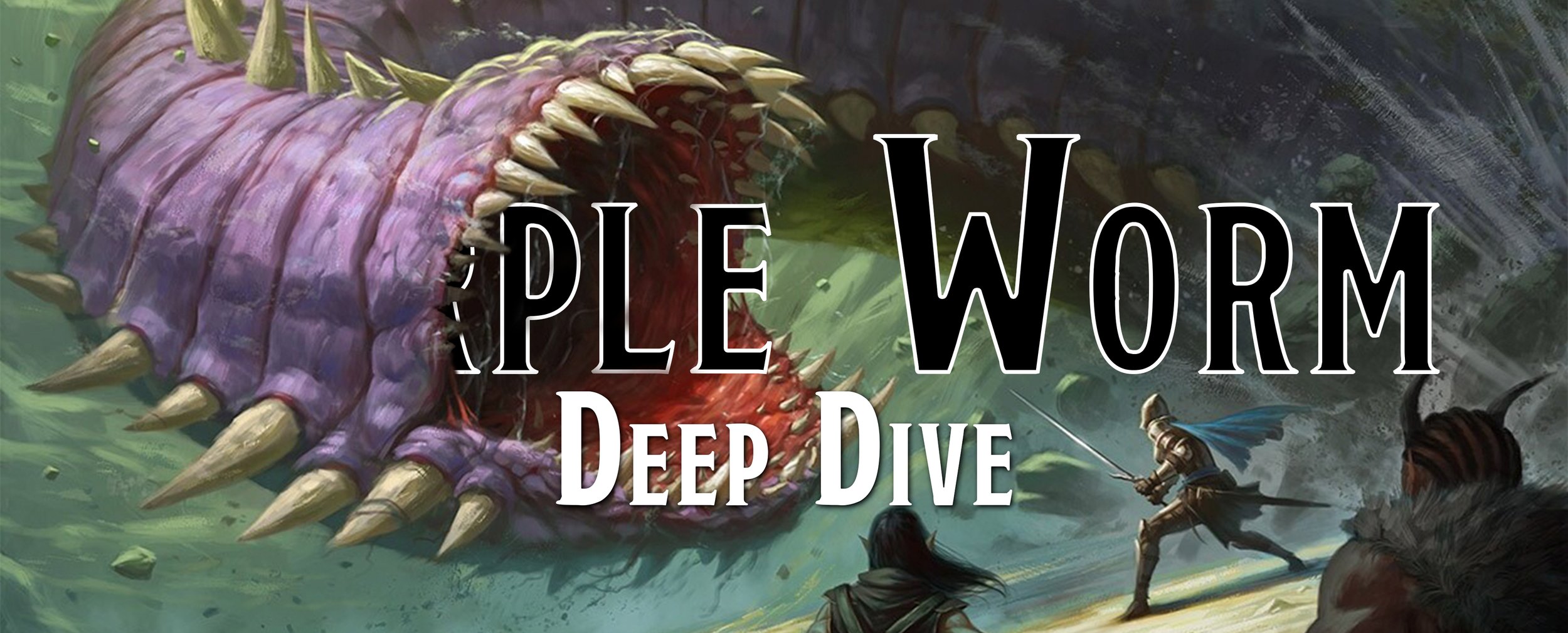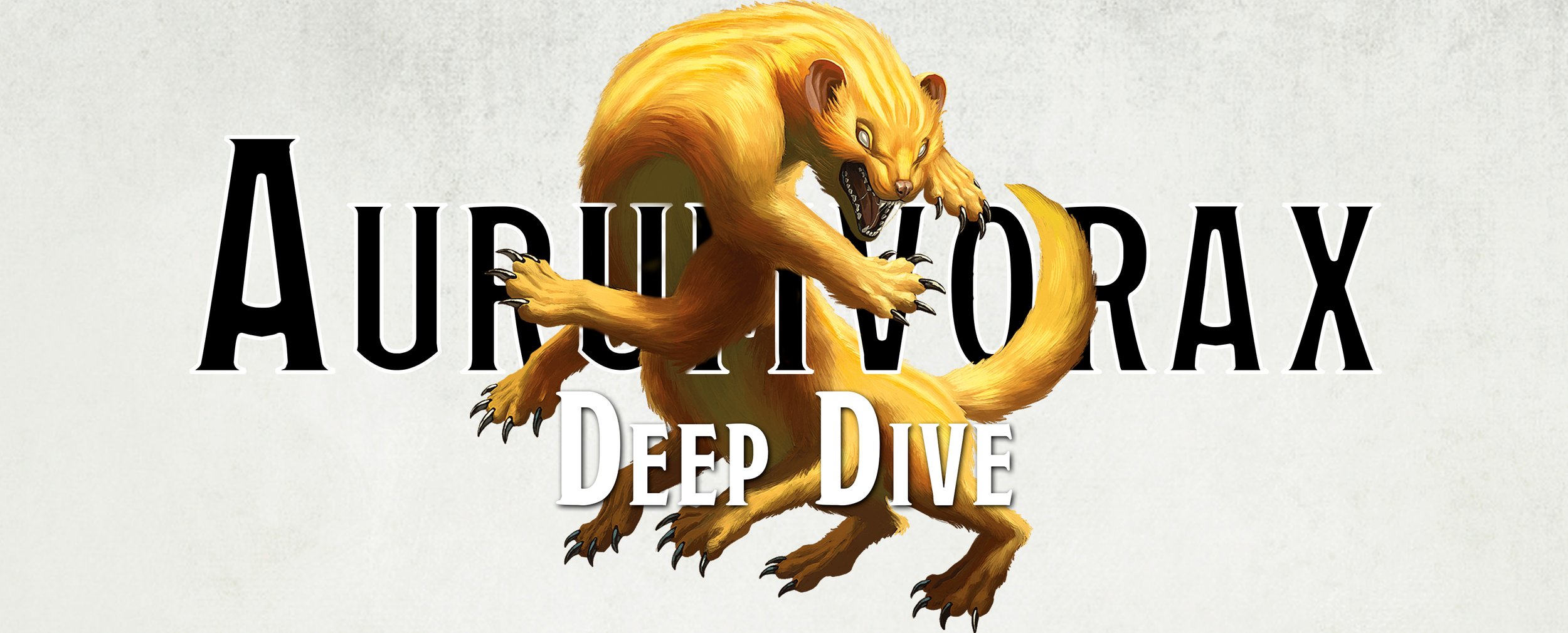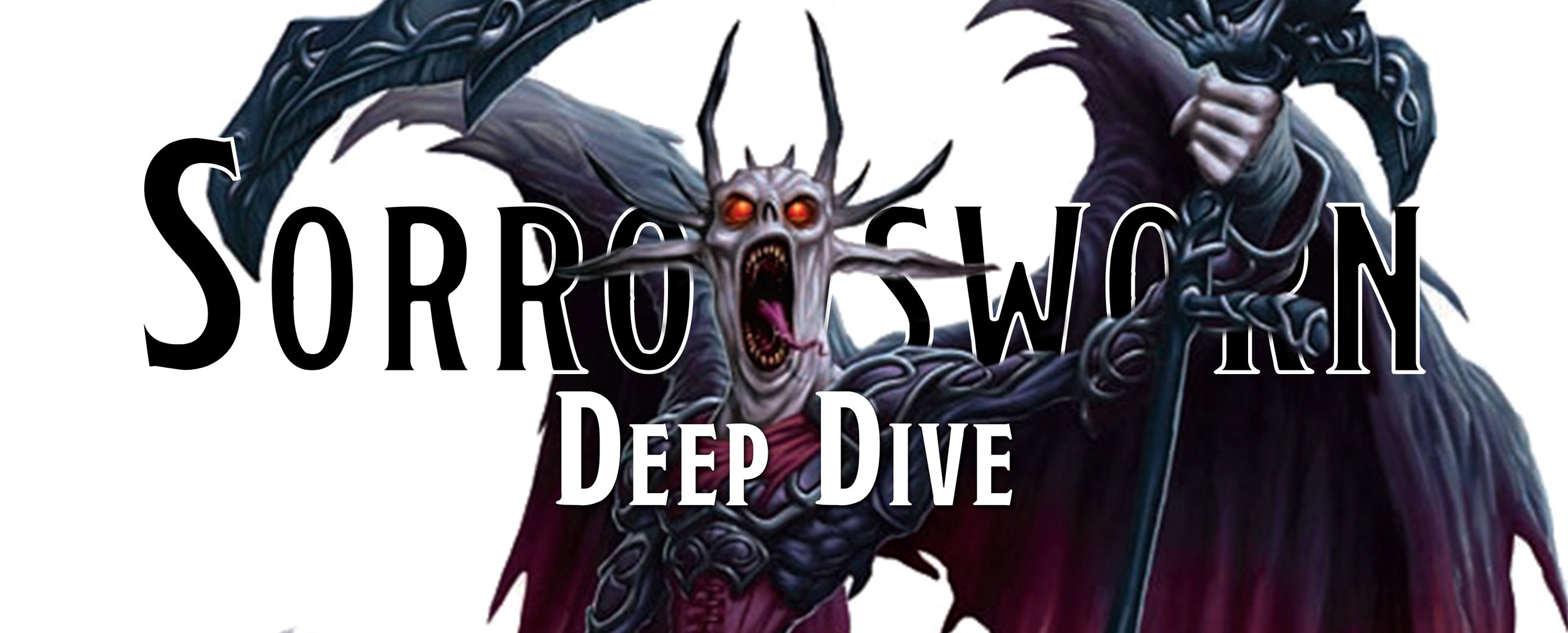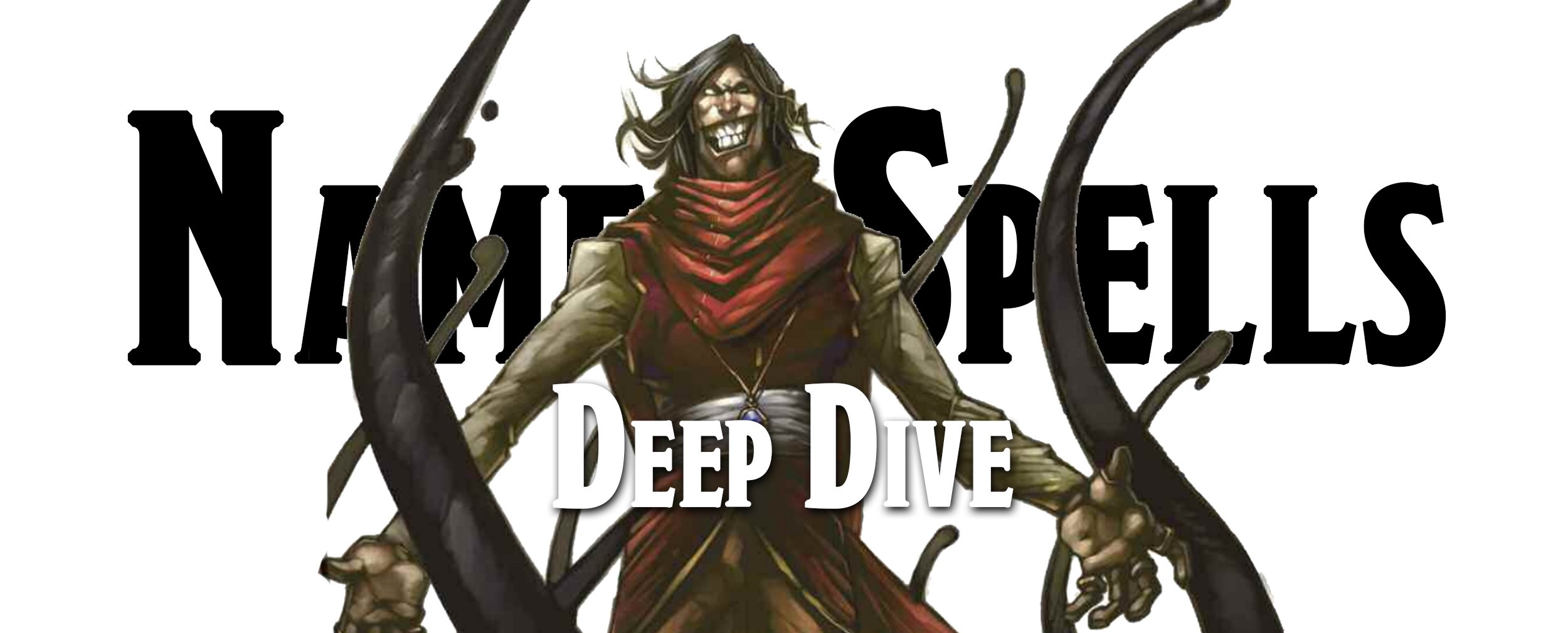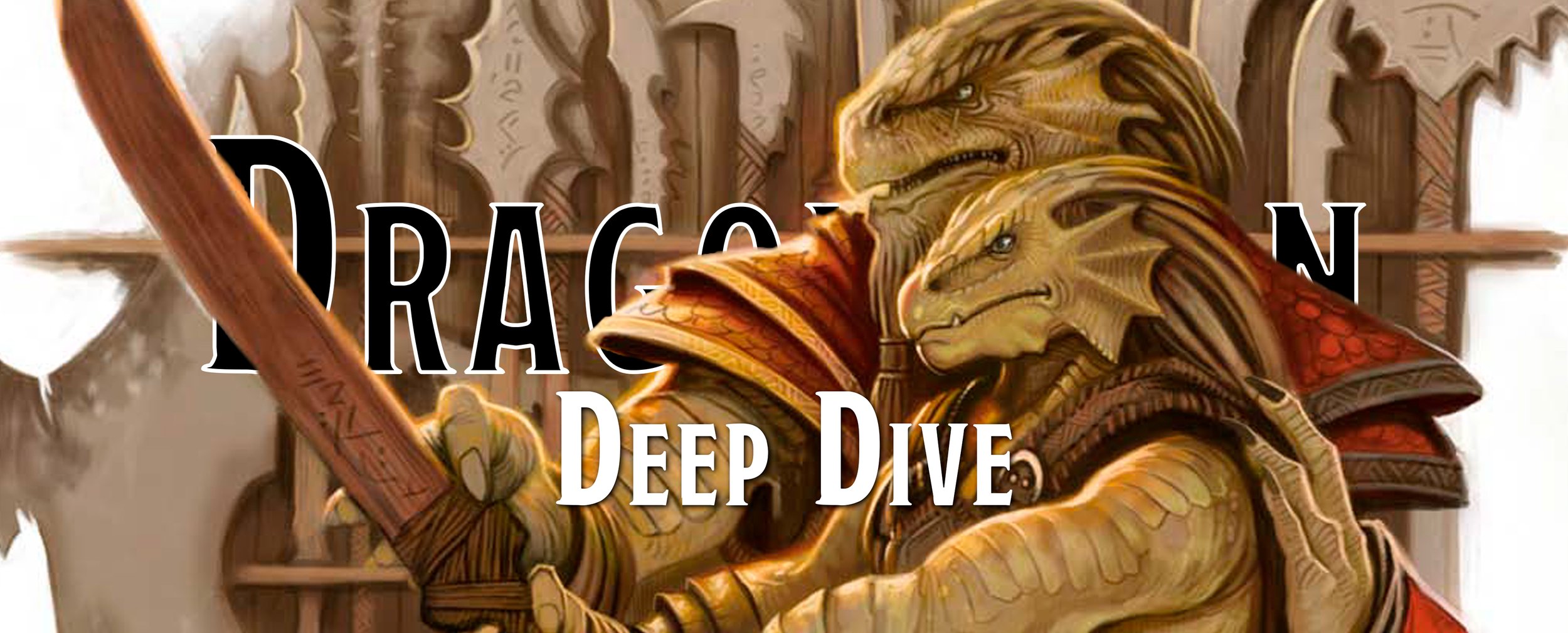Deep Dive - History of the Raven Queen
This week, we are mixing it up a bit and looking at the history of another famous character in Dungeons & Dragons - the Raven Queen. Initially, it seems like a short but exciting topic, and while it certainly was interesting, it was anything but quick. The Queen of Shadows was first introduced in 4e and lived on in 5th edition, and while information may seem sparse, there is quite a great deal of lore to be found in various publications. Hunting down references to the Raven Queen takes you to a wide selection of publications, from the Dragon & Dungeon Magazines to the recently released Explorer's Guide to Wildemount (2020).
Another challenge when writing about the Raven Queen is she is wholly re-invented in 5th edition, with the lore of 4e being tossed out. We understand that 5e wanted to separate itself from 4e, but discarding a fun and intricate piece of lore for a vague background that attempts to be mysterious makes little sense. We are going to provide both backgrounds for the Raven Queen, and you can decide which one fits better with your world.
4th Edition
The Beginning of Nerull
Dragon Magazine #427, 2013 Wizards of the Coast
The origin of the Raven Queen begins, not with her, but with the god of death known as Nerull. In the earliest editions of Dungeons & Dragons, Nerull was always a god, but in 4th edition, secret history is revealed where he was actually a human wizard who was taught magic by Corellon Larethian, a greater deity of elves and magic. He used his magic to further understand death and how he could infuse a dead body with a semblance of life. This was especially important to Nerull because the Dawn War, a massive war between the gods and primordials, was starting to go against the gods. Nerull wanted to create an army of the undead to help the gods win against the primordials and thought he had found salvation for the armies of gods.
The current god of the dead, Aurom, saw this as an abomination of life and enraged Nerull. Aurom was simply jealous of Nerull’s discovery, at least that is what Nerull thought to himself as he fumed and planned. Eventually, Nerull would ambush Aurom after a difficult fight in the Dawn War and slay the god. The other gods were alarmed and quickly rose to destroy Nerull, except this mortal was able to worm his way out of punishment. He only wanted to study death and undeath and wanted nothing to do with any other domains that Aurom had overseen. He offered up those other domains to the other gods who greedily picked over Aurom’s corpse and took those domains for themselves. Those domains were focused on life, birth, growth, fertility, plants, animals, and nature, all things that Nerull had no interest in anyways and this proved to Nerull that gods were selfish creatures who only cared about furthering their power.
Nerull Falls in Love
When the world was just in its infant stages, the gods laid claim to many mortal souls when they passed on. Those souls who had no one to claim them would simply disappear into the ether, into a world outside of even the understandings of gods. The new god of death and undeath, Nerull, begin snatching up those souls and trapped them in one of the Outer Planes known as Carceri. In the earlier editions, Nerull created his domain on the bottom-most layer, Agathys, but in 4th edition, Nerull saw over the domain of Pluton out in the Astral Sea.
Nerull liked power and sought to become the king of the gods, collecting more and more souls, strengthening his power and position. Not willing to wait around for old age to claim the souls he needed, Nerull sent plagues, famine, and disease to the mortal realm to speed up the whole dying process. During this time, Nerull came upon a fearsome and powerful sorcerer queen, whose name is lost to time. Becoming smitten with this woman, who had also been trained by Corellon in the magical arts, Nerull raised her up and forced her to become his queen who he then named Nera.
The Fall of Nerull, The Rise of Nera
Nera was once a powerful sorcerer and queen and had ambitions of her own. Maybe she didn't appreciate the fact that Nerull was the one that had sent the plague that killed her, it could have been she wasn't thrilled with being second in command or that she didn’t get much say in all of this. Reasons aside, Nera took to learning the secrets of Nerull's necromantic secrets of raising the dead. After some time, she was able to master the same process that Nerull used when capturing the spirits and using it to foster his power. She took this newfound power and began an attack against Nerull, wanting to destroy him and take his place.
Unfortunately for Nera, Nerull hadn’t taught everything to her and had learned a trick or two in his time as a god and wasn't about to go down without a fight. Even without his massive armies of undead, Nerull was able to hold Nera off. To summon the strength to defeat Nerull, Nera freed the souls that Nerull had collected all these years, and with each soul she freed, they provided a small boost of power. Having to free almost all the souls, she was given enough power to finally defeat Nerull and seize the mantle of the god of death, or so she thought.
The remaining gods watched this power grab play itself out and saw an opening to wrestle some of the power away from whoever survived the encounter. While basking in the glow of her victory, the gods made their move. They stripped her of the title of god of the dead but instead gave her the title, and power, of the god of death. What's the difference, you say? Being the god of the dead meant you could trap souls of those who died, what Nerull was doing by capturing souls and locking them away for a rainy day when he planned to take over the entire multiverse. Being the god of death meant that it was your job to shuttle souls between the mortal coil and the great beyond.
The other gods, who had watched in horror as Nera exploited and destroyed countless souls when she ‘freed' them, gave the new goddess a choice. She could accept the mantle of the goddess of death and be anointed as a fully-fledged deity, or they would use their collective might and pummel her into non-existence. Unable to see any other options, she accepted their offer.
Dungeon Magazine #171, 2009 Wizards of the Coast
Saying Nera was pissed is an understatement. Her plans for becoming the god of the dead now thwarted, she searched for ways to circumvent the limitations that had been placed on her by the other gods. She dropped the name Nera and was reborn as the Raven Queen, abandoning the gray and depressing Pluton, and moving to the much more cheerful Shadowfell. Yes, Pluton was that bad. Since her move to a nicer neighborhood, the Raven Queen has been tirelessly working and has wiped all previous mentions of her old names. She continues to study the magical powers of souls and how she can destroy those who thwarted her rise to power.
She Rises in Power
Looking to expand her power base by any means necessary, the Raven Queen was afforded in opportunity as the Dawn War against the primordials was close to completion. Khala, the goddess of winter, decided that she disliked the idea of the ‘compromise’ Avandra, a god of change, had made with the other gods that the Material Plane would experience both day and night and the changing seasons. Khala wanted dark and cold winters all the time, and so she, along with her allies, attacked the gods.
It was a long-fought conflict, with many gods almost losing against Khala, but eventually, Khala was defeated and the gods were forced to call on the Raven Queen to bring Khala into death. The Raven Queen, always looking to better her position, offered to do so only if she was given the portfolio of winter - which the other gods agreed to, but the Raven Queen wasn’t done yet.
Lolth's story has several similarities to the Raven Queen's, except with a much different ending. Originally named Araushnee, she was a fey goddess and consort of Corellon. Like the Raven Queen, her ambitions outgrew her status as second fiddle to her male counterpart, and she sought to depose Corellon. Allying herself with one of Corellon's greatest enemies, the orc god Grummsh, she gathered her forces and attacked Corellon. The Raven Queens, sensing an opportunity to curry favor with the other gods, lent her sorrowsworn troops to Corellon's defense. The sorrowsworn is not a creature to be trifled with, for these demons delve deep into your mind and torment you by whispering your deepest defeats and insecurities. They do this as they tear you apart with their claws. With her assistance, Corellon was able to defeat Araushnee, who fled to the abyss, renamed herself Lolth, and took her current spider form. As payment for her services, Corellon allowed her to take up Lolth's former mantle, goddess of fate.
The Shadar-Kai
The shadar-kai are the most intense of the Raven Queen followers. They are a race of shadow fey creatures, though don't confuse them with the drow, they aren't into spiders just ravens. It's appropriate then that they make their home in the Shadowfell. These fey took on the appearance of the Shadowfell, with gray skin, white hair, and dark shadows that somehow seem impossible.
This creepy fey creature has the grace of a dancer on the battlefield, gliding with incredible speed and agility. Fighters wield light weapons while their spellcasters use shadow magic to drain their opponents of life and energy. Blending in with the natural environment of the Shadowfell, the shadar-kai excel at sneak attacks and ambushing their potential victims. If that wasn't bad enough, the shadar-kai can also teleport short distances, reappearing with a form similar to that of a wraith.
Mordenkainen’s Tome of Foes, 2018 Wizards of the Coast
The Shadowfell and Letherna
This is the home of the Raven Queen and is a shadowy reflection of the Material Plane, for more general information on the Shadowfell, check out our series on the Planes. In the context of the Raven Queen, it's essential to talk about her shadow home, Letherna. This forbidden realm is where the Raven Queen holds her court in Fate’s Palace, all souls must pass through the temple where they are then carried off to their afterlife.
The Shadowfell - Gloomwrought And Beyond, 2011 Wizards of the Coast
Interestingly enough, if you are fortunate enough to make it to the palace, and not get slaughtered by the hundreds of sorrowsworn that protect the place, there is a good chance the Raven Queen will see you, as she is quite willing to hear the requests of mortals. While she is known as a dark and secretive god, it's important to note once again that she is not inherently evil. She could be impressed that these adventurers survived the trials they went through to reach her. Or maybe she wants them to witness her immense power and darkness that comes with being the goddess of death. When she isn’t holding court or commanding her loyal servants to do some dark deed, she can be found musing on the secrets of life and death, wondering what the next steps are to secure her power more completely.
Enemies of the Raven Queen
The Raven Queen is the undisputed ruler of the Shadowfell, but that doesn't mean some aren't plotting for her demise so that they can rule this land of darkness. The main two enemies of the Raven Queen are Vecna and Orcus.
Vecna, while in some editions is a god, and in others just a really powerful dude, thinks that death should be his domain. While he may have little interest in ensuring that the souls get to where they are going, he is very interested in claiming dominion over death and undeath. Death provides the knowledge that Vecna so desperately craves, so he would love to get his skeletal hands on the souls of the dead and use them any way he sees fit. Through the use of arcane magic and the knowledge he gains, he has been able to raise countless undead soldiers that assist him in his battles throughout the planes. But when it comes to the Raven Queen, Vecna doesn't attack straight on. His armies have never been used on an assault into Shadowfell. Instead, he comes at the Raven Queen sideways, quietly establishing small footholds throughout the Shadowfell and recruiting members to his cause. He uses these followers to convert others and waits until his forces can become strong enough to strike.
Orcus, on the other hand, has been waging war with the Raven Queen for what seems like forever. To say that these two don't like each other is quite the understatement. Of all her enemies, the followers of Orcus are the most hated. The shadar-kai and her sorrowsworn consider the worship of this demon to be the worst sin imaginable. Orcus controls many lands within Shadowfell, with settlements and temples being erected in his name. Skirmishes occur often, and while the Raven Queen lacks the strength to banish him from her realm, she is always on the hunt for his followers. The shadar-kai and sorrowsworn are sent to uproot and destroy any holdings that Orcus might have, slaughtering them through Gloomwrought and the rest of the Shadowfell. On the other hand, Orcus offers bounties and hires mercenaries to bolster his cults and to kill off the shadar-kai and her worshipers where ever possible.
The Shadowfell - Gloomwrought And Beyond, 2011 Wizards of the Coast
5th Edition
While 4e goes a long way to paint the picture of a sorcerer-queen making the most of being dead, 5e removes that backstory and creates something brand new for her. This also has the bonus for Greyhawk fans in that Nerull is still alive and on the bottom layer of Carceri where he has his frozen realm. Though unlike almost everyone else on Carceri, he isn’t there as a prisoner, but because he likes it there. Takes all types we guess.
Origin Story
Explorer’s Guide to Wildemount, 2020 Wizards of the Coast
Corellon and Lolth are still part of the origin story of the Raven Queen, but they take a much more involved role now. See, those two great elven deities were bickering and tearing the elves apart, forcing them into different factions. In response to this, a great elven sorceress, whose name has been wiped from all records, attempted to ascend to godhood and reunite the two warring factions because what everyone needed was for the elves to be split into three groups instead of just two.
This unknown elf worked tirelessly for years and years before growing her number of worshipers and supporters until she could perform a special ritual to give herself godhood, of course, this is from the kindness of her heart and definitely had nothing to do with gaining more power and being a god. Only kindness. To gain godhood, she needed her followers to pledge their souls to her so that she could create a link between the Feywild and Arvandor, which is a big ask in our opinion. But sure enough, her worshipers flocked to her aid and brought more and more elves to her, all pledging their souls to her rise in power.
When she began this special ritual, things started fairly well for her as she became a semi-divine being of power. Unfortunately, not everyone wanted to give up their souls and help this mortal’s dream of being a goddess become a reality. A group of evil wizards thought that they could siphon off some of her power during this ritual and become powerful themselves. When the woman figured out someone was stealing her power while she was trying to ascend, this enraged her and she made a pit-stop mid ritual to bring her wrath down upon those wizards.
Unfortunately, this caused a problem in the ritual and, in desperation, the almost-god grabbed the souls of her followers and dragged them with her into the Shadowfell where the deity’s body died.
Rise of the Raven Queen
Because gods are hard to kill, her spirit survived in the Shadowfell but it was slowly burning away. In an attempt to keep herself from dying completely, she cloaked herself in the memories of the Shadowfell and formed her new body and identity from those memories. This caused her to use the last of her divine power, but luckily it was enough to sustain her as she fought to stay alive and hold back death. During this same time, she took her revenge against the wizards who had tried to steal a portion of her power and twisted them into the horrible nagpas and sent them to live out their miserable lives in the Shadowfell.
From here, the Raven Queen has been slowly growing her power and reinforcing her position as a goddess of death. She is now a deity and can be found in the Shadowfell and in her Fortress of Memories which, while a decent name, is not quite as cool as Fate’s Palace. Here, the shadar-kai carry out the Raven Queen’s orders, fearless of what death might have in store for them. They know that the Raven Queen will capture their soul and return it to life in the Shadowfell, thus death is only a temporary condition and not something to be feared.
Changes to the Sorrowsworn
Mordenkainen’s Tome of Foes, 2018 Wizards of the Coast
Another big change for the Raven Queen is that she no longer holds sway over the sorrowsworn, but instead they are now emotion giving different forms. These powerful creatures are the negative emotions of the worlds and given a horrifying form that is evil and desires nothing more than a friend. Unfortunately for those they would like to make a friend, they often murder you as they try to hug you or bring you close, their harpoon arms skewering you or their very existence overwhelming your mind with grief and you die from sadness. This probably just makes them sadder and in need of new friends to share their grief with and kill with their pathetic existence.
The Raven Queen
From a woman brought up to be the queen of the dead to an elven maiden who just wanted to end the conflict between the warring elven factions, the Raven Queen has a strange past. There have been some changes to the 5th edition Raven Queen with the Explorer’s Guide to Wildemount (2020), though all that does is return to her the domains of fate and winter. Maybe when 5th edition finally does something more with the Shadowfell, we can more fully explore the story of the Raven Queen, visit her great palace in Letherna, and witness her power over death, fate, and winter.
Dungeon Magazine #171, 2009 Wizards of the Coast
Resources & Further Reading
Divine Power (2009)
Dragon Magazine #380 (2009)
Dragon Magazine #427 (2013)
Dungeon Magazine #171 (2009)
Explorer’s Guide to Wildemount (2020)
Manual of the Planes (2008)
Mordenkainen’s Tome of Foes (2018)
Player's Option - Heroes of Shadow (2011)
The Shadowfell - Gloomwrought And Beyond (2011)
If you enjoy our Deep Dive series consider
supporting us on Patreon and following us on Twitter!

